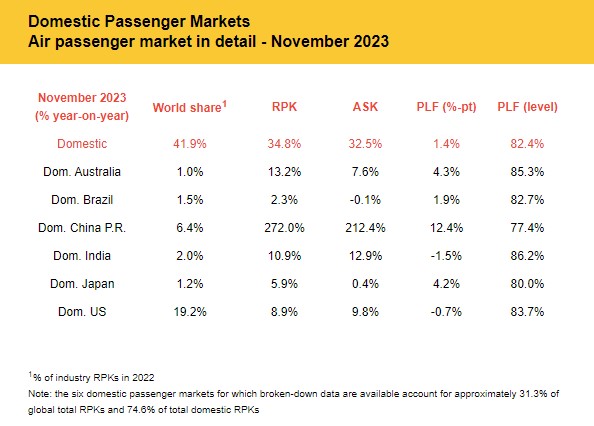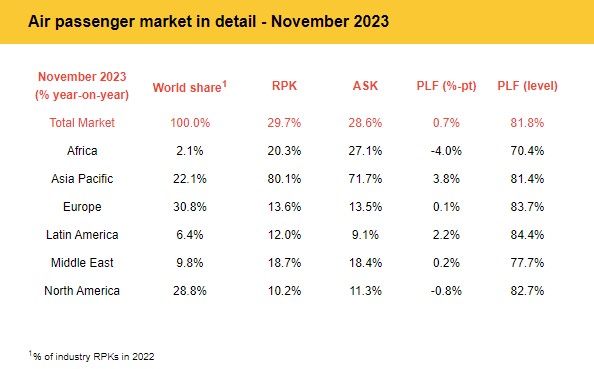Global Air Travel Nears Pre-Pandemic Highs, Reveals IATA’s Latest Report
The International Air Transport Association (IATA) today released data for November 2023, illustrating a robust recovery in the air travel sector. The report revealed that air travel demand has nearly reached the pre-pandemic levels of 2019, with a significant 29.7% increase in total traffic, measured in revenue passenger kilometers (RPKs), compared to November 2022. This brings the global air traffic to 99.1% of the levels recorded in November 2019.
«We are moving ever closer to surpassing the 2019 peak year for air travel,» said Willie Walsh, IATA’s Director General. He emphasized that despite economic challenges, the urge to travel remains strong, with international travel only 5.5% below pre-pandemic levels, a gap that is rapidly closing.
The report also highlighted a 26.4% rise in international traffic and a 34.8% increase in domestic traffic for November 2023 compared to the same period in 2022. Regions like Asia-Pacific showed remarkable recovery, especially in China, which saw a 272% increase in domestic traffic, overcoming the COVID-related travel restrictions of the previous year.
In terms of international passenger markets, various regions reported significant growth. For instance, Asia-Pacific airlines witnessed a 63.8% rise in November traffic compared to November 2022, which Walsh described as «the strongest year-over-year rate among the regions.» Meanwhile, European carriers saw a 14.8% increase in traffic, and Middle Eastern airlines experienced an 18.6% rise.

However, IATA’s focus extends beyond the immediate recovery. The association is actively advocating for a shift towards more sustainable practices, particularly emphasizing the importance of Sustainable Aviation Fuel (SAF). The Third Conference on Aviation Alternative Fuels (CAAF/3) in November and COP28 in December laid the groundwork for this transition, setting a goal of 5% carbon savings by 2030 through SAF.

Walsh stressed the industry’s commitment to this goal, saying, «Airlines don’t need convincing. They agreed to achieve net zero carbon emissions by 2050 and every drop of SAF ever made in that effort has been bought and used.» He pointed out the current production shortfall in SAF and called on governments to enact policies that incentivize its rapid scaling-up.

The IATA report paints a picture of an industry not just on the brink of surpassing its pre-pandemic peak but also one that is actively engaged in addressing the urgent challenge of climate change. The combined narrative of recovery and sustainability underscores the aviation sector’s resilience and its commitment to a greener future.

/https://aviacionlinecdn.eleco.com.ar/media/2024/01/pasajeros-manga-generica-aeropuerto-europa-paris.jpg)
Para comentar, debés estar registradoPor favor, iniciá sesión